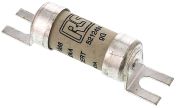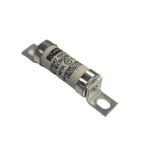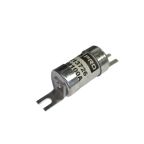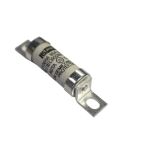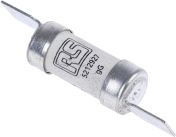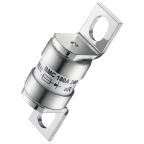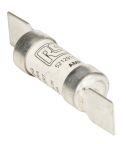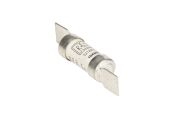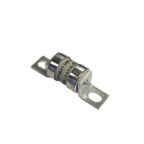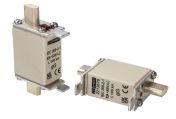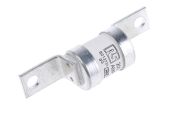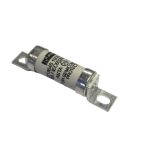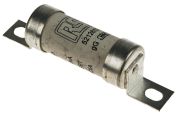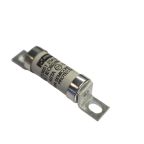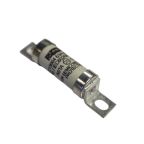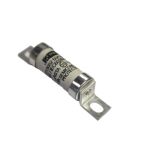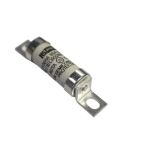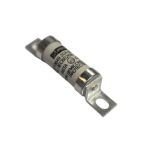Tag Fuses
Fuses are safety devices used to protect electrical circuits from overcurrent or short circuits. Tag fuses are specifically designed for general industrial applications including power distribution, motor protection, and cable protection. Tag fuses can be easily identified by metal tags that protrude from the ends of the fuse body in either central or offset directions.
RS MY offers an extensive range of high-quality fuse tags, ranging from leading brands including Mersen, Eaton, ABB, and RS PRO.
What are the Different Types of Tag Fuse?
Bolted Tag
Bolted tag fuses are a cylindrical type of fuse fitted with brackets at either end to bolt it onto a fuse holder. Bolted tag fuses mainly vary by their size and current rating, and these factors can differ quite widely. They can also differ by the fuse speed, voltage rating and tag orientation.
Centred Tag
Centred tag fuses are square or rectangular with a central blade or tag. The tag allows easy installation into an open fuse base. Centred tag fuses come in a range of fuse speeds, voltage ratings and amperages.
Offset Tag
Offset tag fuses are a cylindrical fuse that features offset mounting tags at each end of the fuse. The tags can be solid or slotted. Offset fuses come in a range of fuse speeds, voltage ratings and amperages.
Slotted Tag
Slotted tag fuses are generally circular in shape but can be square-bodied. They feature slotted tags that can be straight or offset. Slotted tag fuses come in a range of fuse speeds, voltage ratings and amperages.
Blade Fuse Tag
Blade fuses, also known as spade or plug-in fuses. These are flat, plastic-bodied fuses with two prongs that fit into sockets. They are commonly used in automotive and low-voltage applications. Blade fuses vary in size, current rating, and colour, which usually indicates the amperage rating.
Fuse Utilisation Categories
Our tag fuses come in a range of application categories to suit a wide range of industrial applications. Fuses are marked with letters that denote their characteristic or application. The first letter will be lower case, this indicates the breaking range. The second letter will be in upper case and indicate the characteristics.
- g stands for full breaking capacity
- a stands for partial range breaking capacity
Our tag fuses include gG, aM, gR, gM and many more.
Industrial Application of Tag Fuses
Tag fuses are crucial safety devices in various industrial applications. They are placed strategically within the electrical wiring to safeguard specific sections of the circuit. By acting as a weak link, they sacrifice themselves by blowing if the current becomes excessive to protect the wiring from damage, thereby preventing electrical circuits from overcurrent or short circuits. They are often used in power distribution, manufacturing, and more. Here are some key industries that utilise tag fuses:
Electrical Devices
In the electrical industry, tag fuses are essential for safeguarding devices and systems from overcurrent and short circuits. They are widely used in power distribution systems to protect transformers, generators, and other critical infrastructure components. Offset tag fuses and blade tag fuses are commonly used due to their reliability and ease of installation, whereas offset tag fuses are particularly effective in circuits where space constraints require a compact design.
Computer Servers
Tag fuses play a vital role in protecting computer servers and data centres. These fuses help prevent electrical faults that can lead to data loss, hardware damage, and system failures. Centred tag fuses are often incorporated into server power supplies and distribution units. Their central tag design allows for secure and efficient connections within the main tag fuse box, ensuring reliable and uninterrupted operations that safeguard critical data and applications.
Household Equipment
In residential settings, tag fuses are less common than normal cartridge fuses. However, they might still be found in some older appliances or those with very high power ratings. Tag fuses provide protection for specific devices, but normal cartridge fuses are more widely used due to their smaller size and wider availability.
Frequently Asked Questions About Fuse Tag (FAQs)
How do I tell what fuse I need?
To determine the appropriate fuse, check the device's specifications for voltage and current ratings. Fuse tags usually have these ratings marked on them. Ensure the replacement fuse matches these specifications to maintain proper protection.
What triggers a fuse?
A fuse tag can be triggered by an overcurrent or short circuit, causing the fuse element to melt and break the circuit, thereby preventing potential damage to the electrical system.
Can you tell if a fuse is blown?
Yes, a blown fuse tag can often be identified by a visible break in the fuse element or a darkened or cloudy appearance inside the fuse casing. Conducting electronic testing can provide a more definitive diagnosis.
Can fuses go bad without blowing?
Fuses typically do not go bad without blowing. However, environmental factors such as corrosion or physical damage can affect their performance over time, so it’s best to buy a new one to replace your offset, blade, or centred fuse tag if they have been in use for a very long time.
How to fix a blown fuse?
To fix a blown fuse, first locate the electrical isolator for the circuit containing the blown fuse. Then, turn the isolator off to disconnect the power supply. Remove the blown fuse from the tag fuse box and replace it with a new fuse that has the same specifications. Ensure the replacement fuse is properly seated in the fuse holder before restoring power.
